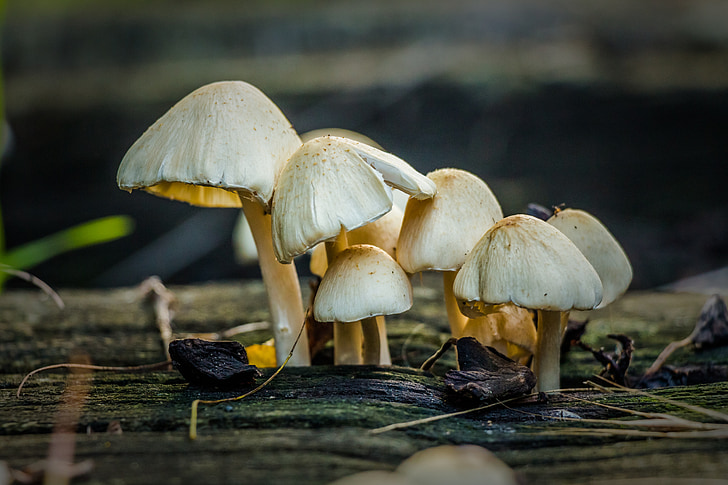The world around us can be experienced in an infinite number of ways. For example, some people like spicy food. They love it so much they feel inclined to add it to every meal. Others (like me), have learned to approach anything spicy with great caution.
Music, like food, is greatly subject to taste. You’ve heard “Beauty is in the eye of the beholder” well “good music is in the ear of the listener” I suppose. Maybe your parents think you listen to noise, or you might think your sibling listens to silly music, and that’s ok! We are all individuals experiencing things in our own individual ways. It’s totally natural, so natural in fact that we are not the only ones experiencing things in our own unique ways. It can be easy to forget, as we are all the main characters of our own story, but the world is teeming with life and wonders around us. There are so many ways that nature inspires us in music. But what if nature could be inspired to make its own music?
Ok, “inspired” is a bit misleading. Plants are not sentient beings that are capable of complex thought. If you asked a tree to serenade you, I doubt you’d have much luck (though by all means, I encourage you to try!). Though they may not perceive things in the same way humans do, research shows that plants are capable of a basic way of thinking which allows them to process and respond to stimuli. These stimuli can include light, water supply, touch, chemical changes in their environment, etc. And, while you may not get a direct answer from the tree in your backyard, there is evidence to suggest that the surrounding florae are much more lively than we ever anticipated.There’s even a somewhat debated theory within scientific circles called the “Wood Wide Web” which pushes the belief that trees use the fungal networks surrounding them to communicate with one another. This would indicate that different species of vegetation interact with and possibly depend on each other, talk about an interconnected ecosystem!
Similar to plant life, fungi have been shown to respond to a plethora of various stimuli. Some may even argue that they are more responsive or at the very least, more complex in their responses than their forest brethren. In “Music to Mushrooms”, an article by The Oxford Scientist, they talk about the responses of plants and fungi when being examined using MIDI (musical instrument digital interface) biodata sonification devices. “Compared to plants which play a single note at intervals, they found that fungi give off a denser signal of biodata which is dynamic and changes over time. This dynamicity is significant as it shows the sentience of fungi in perceiving environmental fluxes which, in turn, influences their behavior.”
There are even debates within the scientific community regarding whether or not fungi should be classified as conscious beings. In a Los Angeles Times article, mycologist Giuliana Furci is quoted discussing fungi’s awareness and adaptability, “Whether or not you attribute that to consciousness depends on the definition of the word. It’s not the same as our consciousness, and that’s what people struggle to understand.” So, though they may not think in the way we do, they are capable of processing the world around them in their own way. The ability to respond to stimuli not only affects where and how the fungal networks may grow, but can also cause them to release their own electrical signals in order to coordinate with each other. If you observed a patch of mushrooms as they were being disturbed, you probably wouldn’t hear or see anything out of the ordinary. But, if you brought a synthesizer and attached some sensors, you could tap into their electrical outputs and translate their electrical fluctuations into sound.
While there is no recorded pattern or language for us to follow, we are able to hear what is happening inside of the mushroom as an audible sound. According to ClassicFM.com, there’s even a biologist who is a practicing mushroom musician. He goes by the stage name “Mycolyco” and is quoted in the article describing his music as “a creative collaboration between humans, mushrooms, and machines”. While the jump from mycologist to musician may seem like a bit of a leap, I have a feeling more surprises will come as there appears to be a lot of untapped potential surrounding our fungal friends. To quote the Oxford Scientist, “In some ways, fungi can be considered expert musicians-picking up on nature’s tones and interpreting them in the context of a grander opus of the ecosystem.” Though fungi may not be capable of conscious thought in the way we are, they are able to communicate with us, not only about themselves, but about stimuli affecting everyone around them.
Again, music is subjective. You may not want to go adding “mushroom masterpieces” to your Spotify playlist, but it might be worth having a listen. We are actually able to experience their existence in musical form. This not only presents some very interesting possibilities in both the worlds of music and mycology, but also serves as a reminder that music can be found in the most interesting and unexpected of places.
Works Cited
Deb, D. (2023, August 1). Music to mushrooms. The Oxford Scientist. Retrieved August 2024, from https://oxsci.org/music-to-mushrooms/.
Hall, S. A. (2022, January 5). Funky fungi? meet the musicians making melodies out of mushrooms. Classic FM. Retrieved August 2024, from https://www.classicfm.com/discover-music/making-melodies-with-mushrooms/.
Joho, J. (2023, February 1). What do mushrooms sound like? hear the psychedelic boops, beeps and womps for yourself. Los Angeles Times. Retrieved August 2024, from https://www.latimes.com/lifestyle/story/2023-02-01/mushroom-music-tiktok.




